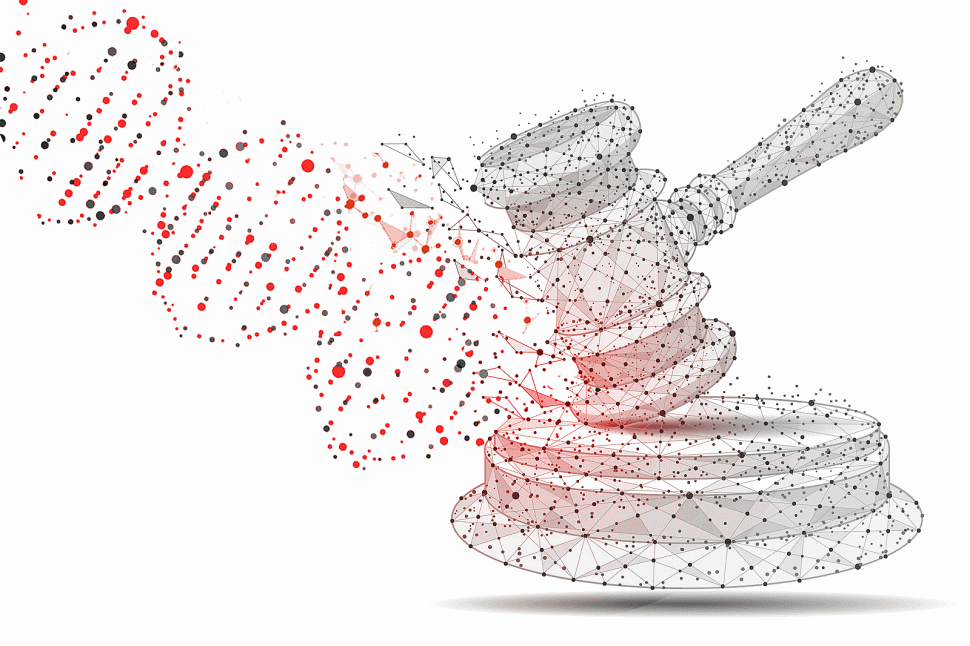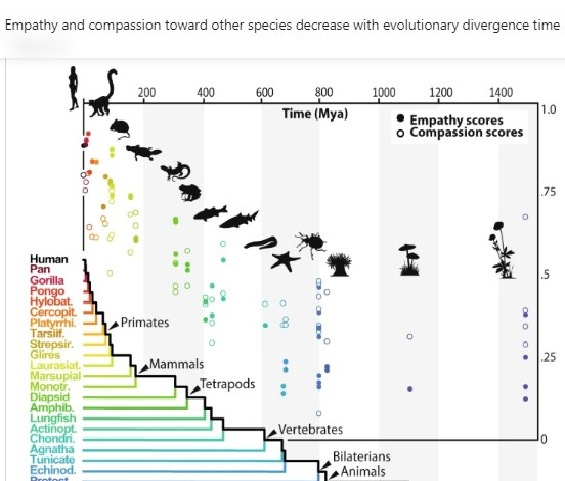Are we cruel overlords?
The Biotechnology Revolution improved our lives and now we have to stop the unintended consequences of animal cruelty

The old Lakota was wise. He knew that man’s heart away from nature becomes hard; he knew that lack of respect for growing, living things soon led to lack of respect for humans, too.
― Chief Luther Standing Bear (1933)1
Native American tradition also holds that when the animals are gone, humans are next, and for the good of the world we should protect these animals.
Western science asks whether animals have feelings, emotions, memories, even death rituals, but is that even up for debate now? We have seen elephants return to their graveyards and appear to mourn; dolphins engage in sophisticated community behavior at their own "health spa" coral reef location; and dogs have learned to emotionally connect with their human companions. Who hasn't had the experience of making eye contact with their dog and getting a rush of oxytocin? Given this new knowledge, should we reconsider what rights animals should have?
In the past, studies of animal emotions and behavior were largely anecdotal. Scientists who observed animals in the wild or in captivity would make note of behaviors that appeared to be emotional, but there was no way to measure what was going on inside the animal's head. This made it difficult to take these observations seriously from a western science perspective.
But now, using fMRI and MRI, we are able to study animal emotions and behavior in a more scientific way. For example, we can use fMRI machines to look at animals' brains and see what areas are active when they experience different emotions. We can also measure the levels of hormones like oxytocin in their bodies.
This new knowledge is changing the way western science thinks about animals. We are starting to see them as complex creatures with their own unique emotional lives. And this knowledge is also helping us to better understand and care for them.
So what are some of the new discoveries about animal emotions and behavior? Here are just a few:
- Animals experience a wide range of emotions, including love, joy, fear, sadness, and anger.
- Animals are capable of forming deep emotional bonds with each other and with humans.
- Animals can suffer from mental health problems like anxiety and depression.
- Animals show signs of grief when they lose a loved one.
- Animals use facial expressions to communicate their emotions.
- Animals have a sense of self-awareness and can recognize themselves in a mirror.
These are just some of the many new discoveries that are being made about animal emotions and behavior. It's an exciting time to be studying these creatures, and we are learning more every day about the intricate inner lives of animals.
Legal protection of animal rights
The U.S. Constitution recognizes the “right of the people”2 and those of a “person”3 which the U.S. Supreme Court has opined is defined around when life begins and when life ends for humans. While some countries like Ecuador have included in their constitution that nature should have “personhood” and other countries have determined particular rivers have “personhood” like New Zealand and India, the U.S. has not recognized those rights or status of animals as a general matter.
In family law, even though pets are often seen as members of the family, they are treated as property in a divorce. The same status of property for compensation purposes is also give to pets when they are intentionally killed or stolen, although greater compensation and punishment would seem appropriate.
While animals have no legal rights, state laws protect animals against cruelty in state and local criminal codes. The FBI started collecting these statistics in their annual crime reports in 2016,4 in part, because of the correlation with animal cruelty by children and young adults with later, violent crimes, like murder and serial killing. Unfortunately, they have been reluctant to share that data so that researchers could begin to code the behaviors to try to identify at-risk behaviors that could save a child from a dark path.5 Criminal data collected by the federal government for law enforcement purposes is not subject to the Freedom of Information Act,6 and so the FBI cannot be compelled to release the data.
The federal government regulates laboratory animal ethics, for those receiving federal research grants. These protocols can be very detailed, including the ethical requirement not to kill rats in the presence of other rats because of the anxiety it produces in the observing rats. The EU countries and the UK all have laws (not just regulations) governing the killing of laboratory animals, but not the U.S., Canada, Australia or New Zealand.7
Congress has recognized that certain primates used in research should be given a retirement with dignity and allowed to live out their lives respectfully and without a grueling death in a laboratory.8 In 2015, NIH announced they would no longer use chimpanzees in experimental research and would provide sanctuary for retirements.9
Despite the discussions around decreasing the use of all animals in laboratory research, the numbers of rodents used is increasing, and 100 million rodents are expected to be used annually.10 This is largely due to the increase in genetic studies, and because rodents can be used as models for a variety of human diseases. Yes, rodents are being developed with inserted human genes for experimentation.11 Does that make you more empathetic knowing that these mice have a few human genes?
Psychological studies show that humans empathy and compassion toward other species decreases with evolutionary distance in time,12 in other words the more they look and act like us or look cute to us, the more empathy we have. That chimpanzees were the first to be given a reprieve from experimentation at NIH and a retirement sanctuary set up for them, attests to that conclusion (see the high rank of the “chimp” on the graph). Rats and mice are going to need a mature society to protect them. (Sticky traps were just banned in the United Kingdom as too cruel for mice,13 so that is a good sign that we are becoming empathetic for those creatures farther down the evolutionary time line.)
Even if we fail to muster enough empathy as a society to save the mice and rats from laboratory experiments, we should abandon some of this torture in favor of far more successful computer models,14 and at least see a decrease in laboratory animals that are sacrificed. NIH will have to take the lead in the way it awards its massive budget for research and normalize this protocol.
The study of animal emotions and behavior is critical to our understanding of the natural world, but it is also important for applied purposes such as improving animal welfare and managing wildlife populations. New discoveries about animal emotion and behavior are being made all the time, as researchers from a variety of disciplines use new methods and technologies.
But there are still hundreds of other primates to rodents used in research every day.
It is important that we continue to make progress in the ethical treatment of animals and respect their ability to feel emotion. These discoveries about animal behavior and emotion adopted into law can help us do just that. Rights for animals would be a good result. As Chief Luther Standing Bear reminds us: Lack of respect for living things will soon lead to lack of respect for humans, too.
What do you think about these animal protection laws or other aspects of this article? Please share your thoughts in the comments.
Luther Standing Bear, “Land of the Spotted Eagle” (1933).
E.g., U.S. Const., Art. I, II, IV
E.g., U.S. Const., Art. V
https://www.fbi.gov/news/stories/-tracking-animal-cruelty
Repeated emails and calls to try to work with the data center in West Virginia using a team of psychologists and researchers was met with stonewalling and ultimate refusal to provide any meaningful data for research.
Exemption Seven, FOIA at https://www.fincen.gov/foia-exemptions-and-exclusions .
https://journals.sagepub.com/doi/full/10.1177/00236772221097472
Chimpanzee Health Improvement, Maintenance and Protection Act (CHIMP Act) (106th Cong. 2d Sess., H.R. 3514 (S. 2725), P.L. 106-551, 114 STAT. 2752 (2000) at https://www.congress.gov/106/plaws/publ551/PLAW-106publ551.htm .
https://orip.nih.gov/comparative-medicine/programs/nih-plan-retire-all-nih-owned-and-supported-chimpanzees .
https://journals.sagepub.com/doi/full/10.1177/00236772221097472 .
https://www.ncbi.nlm.nih.gov/pmc/articles/PMC3895289/
https://www.nature.com/articles/s41598-019-56006-9.pdf
https://www.dailymail.co.uk/sciencetech/article-10759059/Inhumane-glue-traps-mice-rats-set-BANNED-England.html
https://www.biotechniques.com/drug-discovery-development/animal-testing-outperformed-by-computer-models/#:~:text=Researchers%20from%20the%20University%20of,accuracy%20of%2089%E2%80%9396%25.





Tsin'aen siguu (thank you very much) for your good words. It is our willful ignorance, particularly among scientists (of which I am one), that allows the continued use and misuse of animals for our research, food, and entertainment. If our culture(s) could practice, and teach from the youngest ages, humility and compassion, that we as humans are not meant to be overlords, but rather to be a part of a whole - how differently I imagine we would approach finding solutions, and how different the solutions themselves (to health and other research questions) would be!
I once found myself as the only science teacher at a small community college. Instead of "ordering fetal pigs", as the textbooks said, I asked students to bring in animals that they or people they knew hunted for food or fur. One student asked an Indigenous person to bring in a sea otter that had been legally hunted for fur. When we dissected it, we found ENORMOUS kidneys! This was completely new to me! It led to a discussion of why, and of how a sea mammal that needs freshwater processes seawater. While there can be discussions of whether or not it is "right" to hunt for food or fur, the experience did not harm any additional animals, and the Otter had at least lived it's life naturally with full social interactions. And those of us blessed with the Otter (who was returned to the Indigenous person) became more deeply connected to the place we were in and learned important science we would not have learned from the factory chain of fetal pigs.
What if, instead of dissection at all, our class material would let us learn from deep observation? Would that not also have served the purpose of learning biology -- and in a way that would connect students more closely to the place they lived, and instill in them a deep need to allow the un-built world to flourish?
Thank you for sharing that story. I do agree we need to ask better research questions, in general. We could also draw on Native Science from observations, like you suggest. Wouldn't it be amazing if classes would thank the animal that has to be dissected for giving the class knowledge about them? That changes perceptions about relationships with all living things around you. Thank you again, for your thoughtful comments.